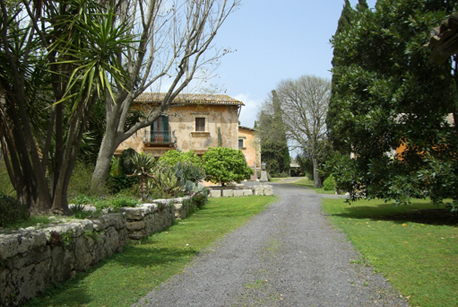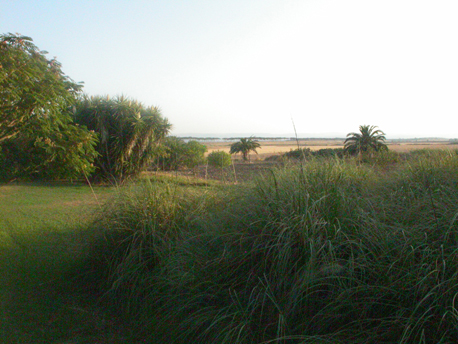
Biviere Garden
This post is also available in:
 Italiano (Italian)
Italiano (Italian)
Born from the love and botanical passion of the last owners, the Princes Scipione and Maria Carla Borghese, Giardino del Biviere stretches on a vast depression between the plain of Catania and the northern slopes of the Iblei Mountains, west of the Ionian Sea.
It’s a wonderful example of a Mediterranean-exotic garden, covering 7.4 acres on three different levels. It is also known as the “garden of the myth”, due to an ancient legend about the origins of this place: Hercules, the strong son of Jupiter, defeated the Nemean lion and offered its skin to the goddess Ceres, protector of the harvest who lived in the city of the Lestrigoni. Enchanted by this land, Hercules created a lake and named Lacuus Erculeus. Over the centuries, the lake changed its name to “Biviere”, from the Arabic “Veveré”, meaning a Born from the love and botanical passion of the last owners, the princes Scipione and Maria Carla Borghese, the Giardino del Biviere occupies a vast depression between the plain of Catania and the northern slopes of the Iblei mountains, west of the Ionian Sea. A wonderful example of a Mediterranean-exotic garden, it extends for about 3 hectares, on three different levels. It is also known as the “garden of the myth”, due to the ancient legend that tells of the origins of the place: the mythical hero Hercules, very strong son of Jupiter, after defeating the Nemean lion wanted its skin from the goddess Ceres, goddess of the harvest, who lived in the city of the Lestrigoni; enchanted by this land, he gave birth to a lake, which he baptized Lacuus Erculeus. Over the centuries, the lake changed its name to ‘Biviere’, derived from the Arabic ‘Veveré’, meaning “a drinking trough for flocks and a fish farm”.
History
In 1392, Martin I, king of Sicily, granted “Biviere di Lentini” as a fief to an ancestor of Scipione Borghese. The main house, a simple country building built before the XVII century, once overlooked an ancient lake port. Mentioned by Giovanni Verga in the short story “La Roba”, the lake was eventually drained in the 1930s, to defeat the scourge of malaria. In 1968, the Biviere became the home of Scipione and Maria Carla Borghese, who decided to transform this abandoned land into a garden, now belonging to the Grandi Giardini Italiani circuit.
The lake was eventually restored, albeit smaller and further away from the house.
The manor house (Villa Borghese)
The main residence, built before 1693 – the year of the earthquake that hit eastern Sicily and damaged the façade – overlooks what used to be a port encompassed by large man-made boulders. The L-shaped building has two floors and is enriched by a beautiful portal and light-coloured stone windows that open onto an area paved with terracotta, adorned with four grapefruit plants (Citrus x paradisi). Along the building grow five specimens of Cereus spp. from Central-South America, and a majestic Euphorbia canariensis. On the back, there is the old inn, which once housed the hunters, and a chapel built by the first owners of the estate, the Lanza Branciforti family, dedicated to Saint Andrew, the protector of fishermen.
Plants
Inserted on what once were the piers of the ancient port, the succulent collection created by the owners features a wide range of the Aloe genus (Aloe marlothii, A. ferox, A. saponaria, A. striata, A. commixta), several varieties of agave (Agave ferox, A. salmiana, A. striata), Sedum, euphorbia and many Crassualcee, coming from various areas of the world but well adapted to the Sicilian climate; they can withstand the remarkable temperature range in this southernmost part of Italy.
Some specimens of Yucca elephantipes have been eventually planted inside the piers, in the spaces once occupied by water, and then surrounded by a simple lawn.
The garden also grows many Mediterranean and exotic species, including oleanders (Nerium olenader), palms (Phoenix spp.), carob trees (Ceratonia siliqua), cypresses (Cupressus sempervirens), monumental pines, jasmine, Strelizia reginae, a rare specimen of Xanthorrea arborea and one of Encefaloartus horridus: a species believed to be a fossil now, but recently found alive in Tanzania; there are also several Moroccan birches and false pepper (Schinus molle). Many roses grow in the garden as well, including a magnificent Rosa x fortuniana, with a very rich white flowering in the month of May.
Thanks to the marshy vegetation that grows around the new lake, the Biviere is also an important oasis for many species of birds, and flocks, as well as a fish farms.
This post is also available in:
 Italiano (Italian)
Italiano (Italian)
Contatti
Contrada Case Biviere. - Lentini(SR)
095 7831449
mikiborghese@biviere.it
http://www.ilgiardinodelbiviere.it/
Altre info
Ingresso 10,00 euro
Visite su prenotazione








